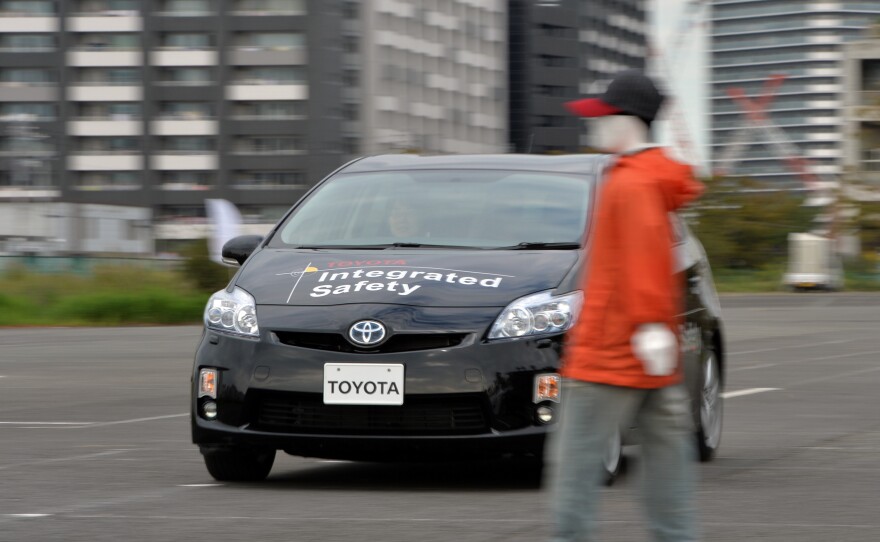New cars boast a wide range of high-tech safety features that promise to avoid accidents and make driving easier.
But manufacturers have also invented a wide range of names for those features — creating confusion for shoppers and renters who just want to know what a car can do.
AAA examined 34 vehicle brands for model year 2018 and found a confusing morass of terms for driver assistance systems. Think of cars that can warn drivers if someone's in their blind spot, or help steer a car to keep it in the middle of its lane, or automatically hit the brakes if a driver is about to crash into something.
These features are increasingly common. More than 92 percent of new cars offer at least one as an option, AAA says, while automatic emergency braking is a standard feature on more than 30 percent of new car models.
But as the technology proliferates, so do the number of unique names for essentially identical features.
One manufacturer's "advanced blind spot monitoring" is another's "lane change assistant." Which should not be confused with "lane assist," which, in another car, might be called "intelligent lane intervention." (One is a warning if someone is in the lane beside you; the other takes over your steering to keep you within the lines. Did you guess as much from the names?)
Then there's adaptive cruise control: Instead of just keeping a constant speed, a car adjusts its acceleration and braking to keep a constant distance behind the car in front.
Sounds simple enough, right?
"We found 20 unique names that describe that basic functionality," says Greg Brannon, director of automotive engineering at AAA.
Distance Assist. Distance Pilot. Distronic. Dynamic radar cruise control. Smart Cruise Control. Camera-based cruise control.
And if 20 names sounds like a lot, consider collision mitigation or automatic emergency braking — a system that hits the brakes for you if you're about to collide with something.
There are 40 unique names for that kind of system, AAA found, including "City Safety," "Smart Brake Support," "Pedestrian Protection," "BAS Plus with Cross-Traffic Assist" and "Forward Collision Warning & Autonomous Emergency Braking w/ Pedestrian Detection (Front Assist)."
To add to the problem, while many of the automatic braking systems are very similar, they're not perfectly consistent.
"Some of those systems will bring the car to a complete stop, if physics will allow it — 0thers will just slow the vehicle down a little bit before making an impact," Brannon says. "The driver is left to try to figure out what those differences are."
"What we're proposing is that some standardized naming could help that situation quite a bit," he says.
Consumer Reports has previously raised concerns about the inconsistent naming conventions surrounding driver assistance technology.
"This is not a frivolous issue of semantics," the magazine wrote in October. "Clear terminology is critical to a consumer's ability to make an informed purchasing decision."
Copyright 2019 NPR. To see more, visit https://www.npr.org.






